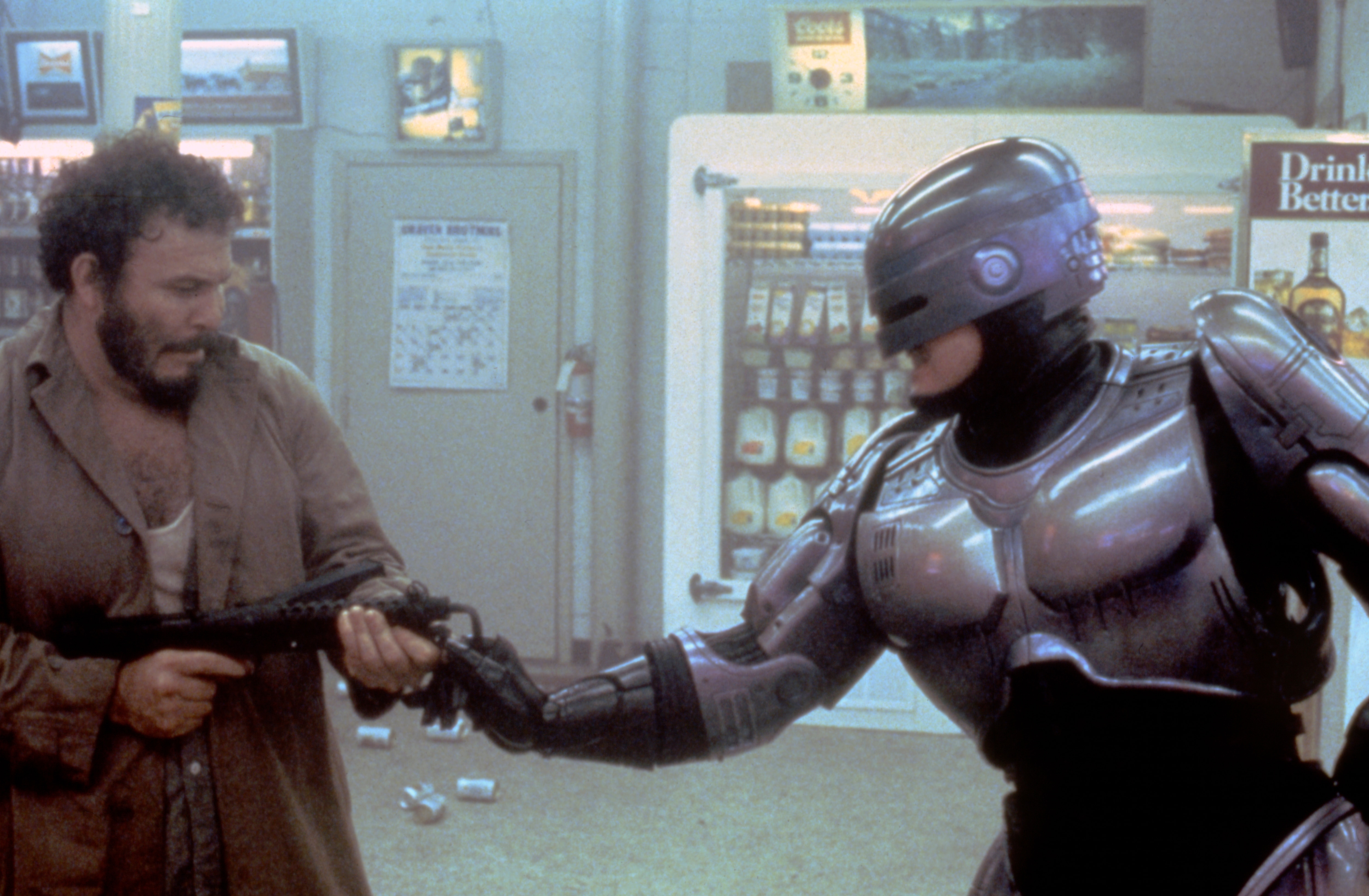Create a free profile to get unlimited access to exclusive videos, sweepstakes, and more!
Connecting mind to machine: The science behind 'RoboCop'
We're getting better at melding our bodies with machines.

Thirty-five years ago this week, the world was introduced to RoboCop. Set in Detroit in a dystopian future, the movie follows officer Alex Murphy (Peter Weller), who, after a fatal injury, is transformed into a cyborg with an array of futuristic bionics.
Thankfully, we have thus far been able to hold off the worst parts of RoboCop’s dystopian world, but that shouldn’t stop us from trying to realize the best parts. For decades, scientists all over the world have been working toward building better bionics, not to create a more mechanical police force but to enhance or return functionality to the millions of people around the world who have experienced a traumatic injury.
COMPUTER-BRAIN INTERFACES
Prosthetic devices have long been a part of the human story. As early as 3,000 years ago, people were crafting functional replacements for lost body parts. The oldest known prosthetic is the Cairo Toe, a beautifully carved wooden prosthetic which was found attached to the remains of a woman in Egypt. In addition to providing an aesthetic replacement for the lost digit, scientists believe it might also have helped restore balance to the wearer.
Since then, the science of prosthetics has progressed significantly, resulting in the complex devices available to patients today. Many modern prostheses are capable of complex actions, mimicking to at least some degree the function of lost hands. Often times, the wearer signals the arm to perform a particular motion by triggering muscles in the remaining parts of the body. It’s less like learning to use your hand again and more like learning to use your hand in an entirely different way.
There’s no denying that prostheses are incredible inventions which restore function and mobility to millions of people, but they don’t quite achieve our science fiction dreams. Building a convincing facsimile of a limb is only the first piece of the puzzle. Building a limb accomplishes the hardware requirement of our imagined synthetic bodies, but to truly break into the future, we’ll need a software component as well. That’s where brain-computer interfaces come in.
While an artificial limb restores the aesthetics and mechanics of a body part, we have so far struggled to restore the electrical connection between body and brain which our nervous systems so elegantly achieve. Slowly but surely, science is chipping away at the problem.
In 2008, researchers created a rudimentary robotic arm outfitted with a soft pincer-like hand and tasked macaque monkeys with using the arm to grab onto bits of food offered by laboratory scientists. There was only one catch, they had to move the arm with their minds. An array of electrodes implanted into the motor cortex of the monkeys’ brains allowed them to move the limb with their thoughts. Incredibly, they were able to accomplish the task with up to 78% accuracy.
In the intervening years, the technology has only improved and recently a similar setup was tested on a human patient. A study published in the journal Frontiers in Neurorobotics documented a partially paralyzed man controlling two robotic limbs with his mind. In one hand he held a fork, in the other he held a knife, and he used them both simultaneously to feed himself cake. While these sorts of interfaces aren’t quite ready for widespread use, it appears that after decades of research, brain-controlled prostheses are primed to hit the world stage.
SENSORY FEEDBACK
Computer-brain interfaces provide another piece of the bionic puzzle by allowing users to control their synthetic limbs with their minds, but they don’t offer the sort of tactile feedback we’re used to from biological systems.
When you move your hand to pick up an object, there are several processes at work. Signals from your brain travel along your nerves to your hand to move and manipulate your arm, wrist, and fingers. Once you grab onto an object, signals are then sent back up your arm to the brain. It’s this this continual back and forth communication which allows us to easily interact with our environment.
Today, even with the incredible advances in computer-brain interfaces, that communication is largely one way, but scientists are working to close the information loop. Research has shown that integrating sensory feedback improves an individual’s ability to perceive their phantom limb and their prosthetic, increasing accuracy of use.
A study published in the journal Science Robotics found that a patient using an artificial hand exhibited more precise grip strength when provided with sensory feedback, allowing them to more accurately handle even fragile objects.
To provide sensory stimuli, researchers implanted two 100-electrode arrays into nerves of the residual limb. They used those electrodes to stimulate the nerves and mimic the body’s natural sensory language to simulate the feeling of touching an object. This technology uses the same philosophy as the previously mentioned brain-computer interface, only it sends information in the opposite direction.
In addition to improved function, the study participant also noted improved emotional well-being as a result of sensory feedback. Not only was phantom limb pain decreased and embodiment of the artificial limb increased, but he also noted the unique experience of touching his wife with his prosthetic hand and being able to feel her with it for the first time.
Improved communication between our technology and our biology means that our mostly robotic future police force can remain human even while they’re mostly machines. In the meantime, we have the opportunity to improve the quality of life for millions of people and that, at the end of the day, is the point.




























